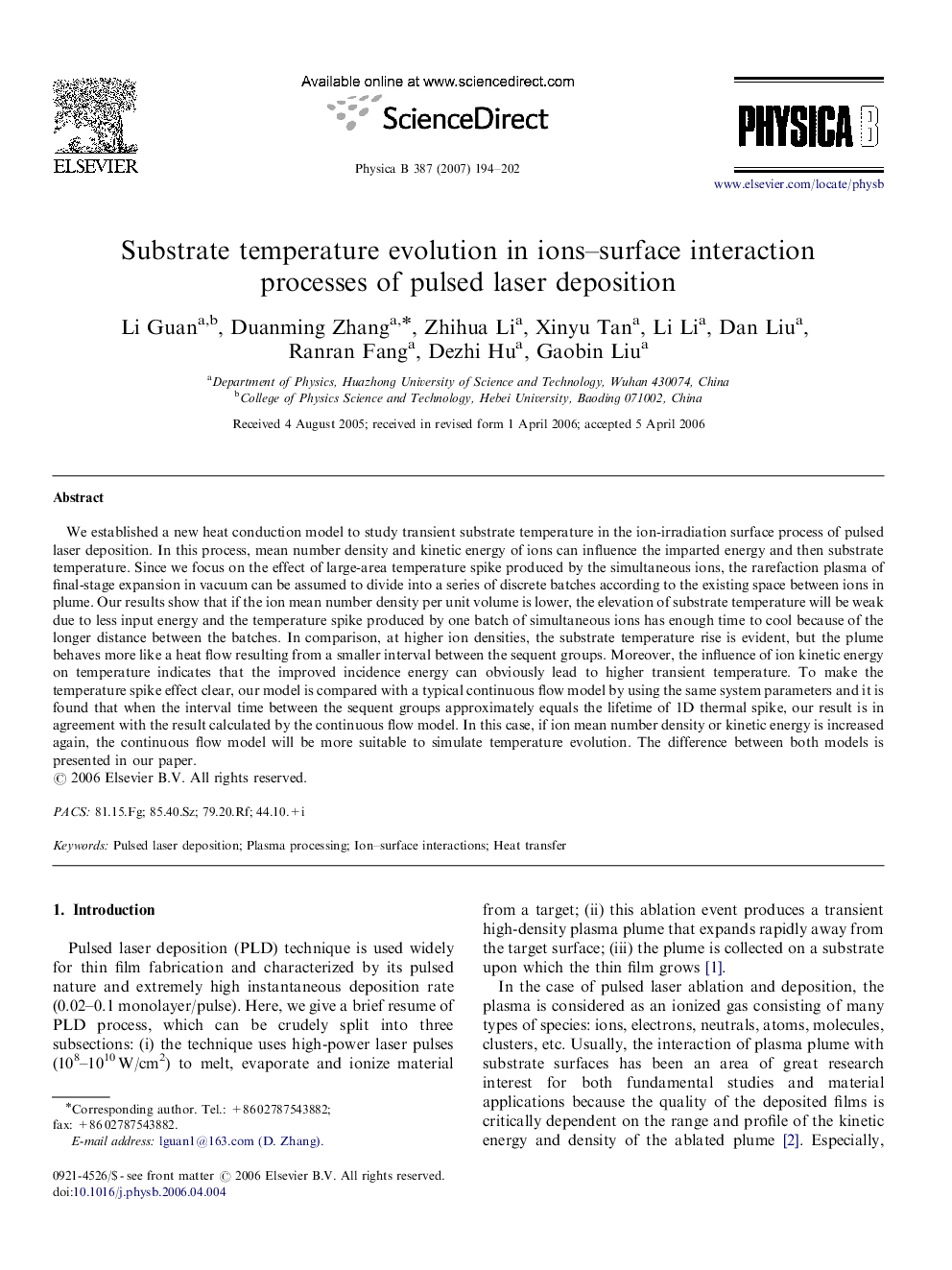| Article ID | Journal | Published Year | Pages | File Type |
|---|---|---|---|---|
| 1816110 | Physica B: Condensed Matter | 2007 | 9 Pages |
Abstract
We established a new heat conduction model to study transient substrate temperature in the ion-irradiation surface process of pulsed laser deposition. In this process, mean number density and kinetic energy of ions can influence the imparted energy and then substrate temperature. Since we focus on the effect of large-area temperature spike produced by the simultaneous ions, the rarefaction plasma of final-stage expansion in vacuum can be assumed to divide into a series of discrete batches according to the existing space between ions in plume. Our results show that if the ion mean number density per unit volume is lower, the elevation of substrate temperature will be weak due to less input energy and the temperature spike produced by one batch of simultaneous ions has enough time to cool because of the longer distance between the batches. In comparison, at higher ion densities, the substrate temperature rise is evident, but the plume behaves more like a heat flow resulting from a smaller interval between the sequent groups. Moreover, the influence of ion kinetic energy on temperature indicates that the improved incidence energy can obviously lead to higher transient temperature. To make the temperature spike effect clear, our model is compared with a typical continuous flow model by using the same system parameters and it is found that when the interval time between the sequent groups approximately equals the lifetime of 1D thermal spike, our result is in agreement with the result calculated by the continuous flow model. In this case, if ion mean number density or kinetic energy is increased again, the continuous flow model will be more suitable to simulate temperature evolution. The difference between both models is presented in our paper.
Keywords
Related Topics
Physical Sciences and Engineering
Physics and Astronomy
Condensed Matter Physics
Authors
Li Guan, Duanming Zhang, Zhihua Li, Xinyu Tan, Li Li, Dan Liu, Ranran Fang, Dezhi Hu, Gaobin Liu,
